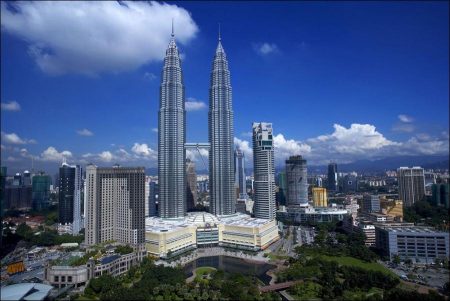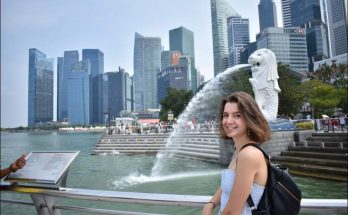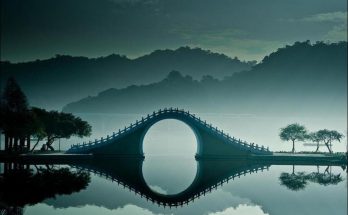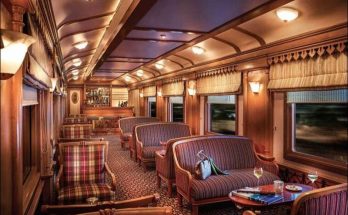Three rivers flow into a spacious city of tree-lined streets and contemporary buildings. Founded in 1859 by a group of tin miners, Kuala Lumpur’s most picturesque face is seen in the older streets of thatched Kampongs on stilts. Modern interpretations of national and religious architecture give the city a skyline of domes and minarets. Best examples are the Moorish style Railway Station and beautiful National Mosque.
Situated in the Lake Gardens are Parliament House and the National Museum with a good collection of local antiques, flora and fauna. The National Art Gallery in the Tunku Abdul Rahman Hall, Jalan Ampang, displays work by Malaysian artists. North of Kuala Lumpur (eight miles) are the Batu Caves, vast natural caverns that, during the festival of Thaipusam, are the goal of Hindu penitets who, impaled with spikes, climb the hundreds of steps to the cave shrine. Tin dredging can be seen along the road to the Batu Caves, and the tin mines of Ampang Village (five miles) are well worth to visit. Malaysia’a second major industry is rubber and a rubber plantation lies along the road to the National Zoo (about eight miles); early in the morning women can be seen tapping the trees of rubber.
Rugby, soccer, horse-racing, cricket, tennis and badmnton are all popular in Malaysia. There are swimming pools in the larger towns and golf courses (Kuala Lumpur at Fraser’s Hill and the Cameron Highlands). Good sea angling is to be had in and around the lagoons and islands and freshwater fishing is catered to in the National Park. Bersilat, the Malay art of self-defense, was introduced to Court in the 15th century. Demonstrations, accompanied by the rhythmic beating of gongs and drums, are often given at ceremonies and festivals.
Visits: 61



